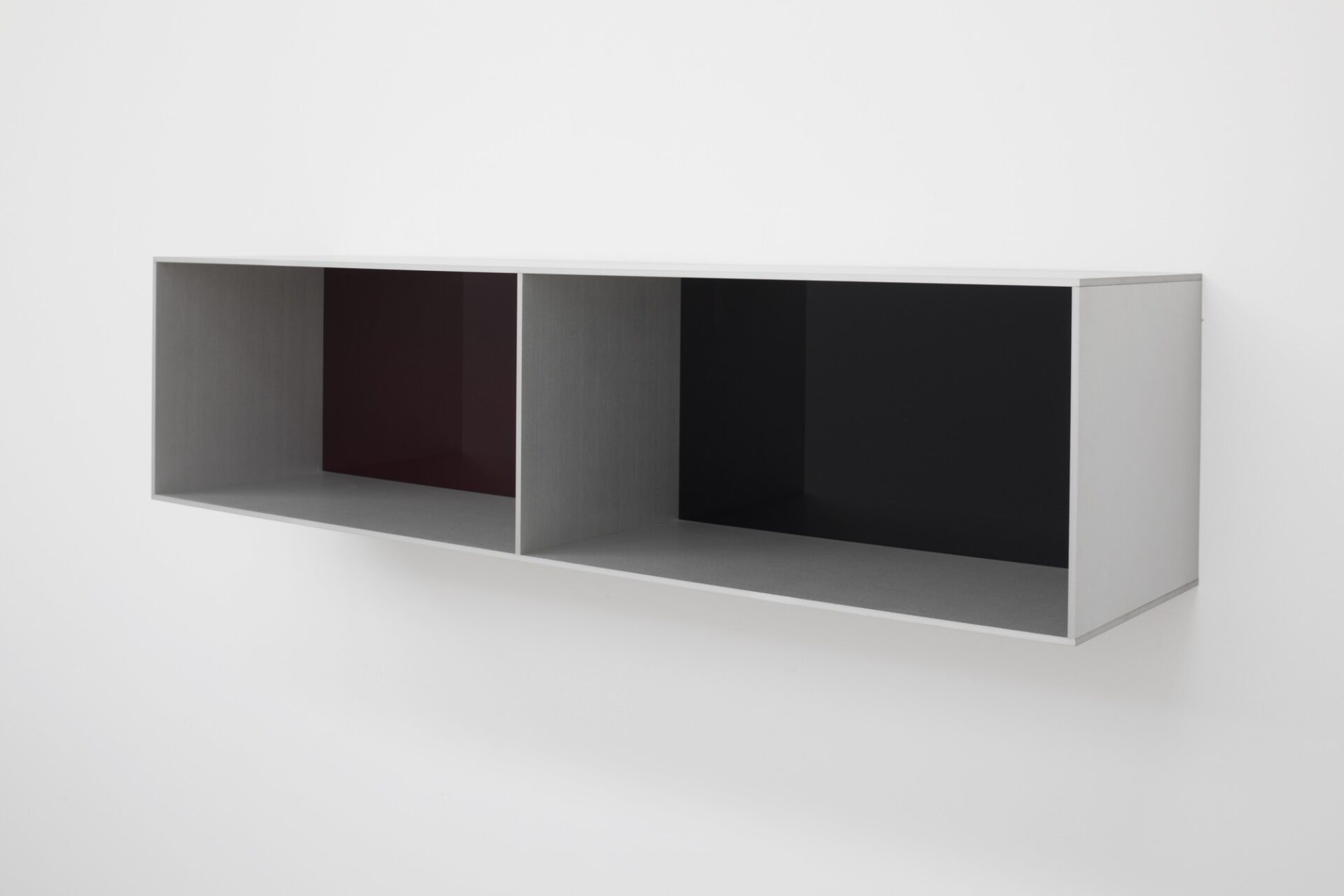Donald Judd installed seven anodized aluminum works at his studio at Las Casas. Each of the works has dimensions that are consistently proportional, either 1:2:1 or, as in this work, 1:4:1.
For this piece, Judd used red and black plexiglass in an additional proportional relationship of 1:2 with a center divider. In his 1993 essay “Some Aspects of Color in General and Red and Black in Particular,” Judd asked, “What if the red and black spots are next to each other?” continuing, “The red could also be cadmium red light, the medium, cadmium red dark, or alizarin crimson. In a way, side by side, the red and the black become one color. They become a two-color monochrome. Red and black together are so familiar that they almost form a new unity.”1
Each work engages space by projecting from the wall “at least as much as its height.”2 In his 1983 essay “Art and Architecture,” Judd wrote, “Proportion is very important to us, both in our minds and lives and as objectified visually, since it is thought and feeling undivided, since it is unity and harmony, easy or difficult, and often peace and quiet. Proportion is specific and identifiable in art and architecture and creates our space and time.”3

